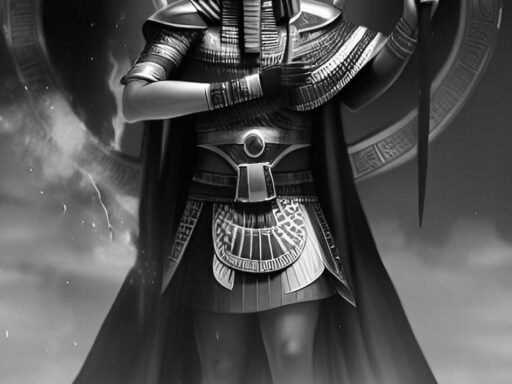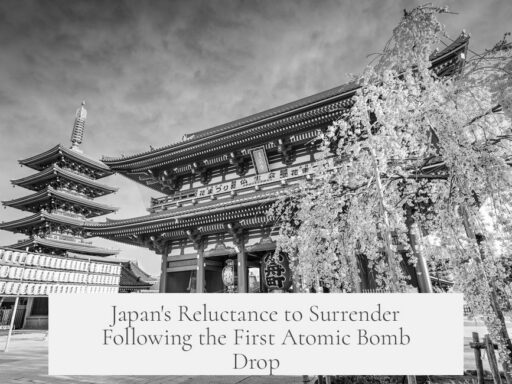Chinese immigrants to the United States maintained the queue hairstyle, despite no longer being subject to Qing dynasty rules, because the queue had become a deeply embedded cultural symbol and a marker of identity that connected them to their homeland and traditions.
The queue hairstyle was introduced forcibly by the Qing dynasty after the Manchu conquest in the 17th century. All men were required to shave the front of their heads and braid the remaining hair into a long pigtail. This imposition caused deep resentment among the Han people. Confucian beliefs emphasized filial piety, including the sacredness of the body and hair as inherited from one’s parents. Cutting the hair was considered a grave violation of this principle.
Enforcement of the queue decree was harsh and violent. The Qing government executed resisting Han men and forcibly relocated entire villages. The policy embodied the stark choice: “save your head if you don’t save your hair, and save your hair if you don’t save your head.” Despite the initial intense hatred, after two centuries of Qing rule, the queue became a normalized and even “traditional” hairstyle for many Han Chinese. The Qing imperial regime integrated into Chinese society and bureaucracy, reshaping cultural practices, including longstanding hairstyles.
By the mid-19th century, when many Chinese began immigrating to the United States, the queue was no longer solely a symbol of oppression but part of daily life and identity. This shift is important in understanding why immigrants kept the queue abroad.
Two key reasons explain the persistence of the queue among Chinese immigrants in the US:
- Custom and Precedent: By the 1850s and 1860s, the queue had been an accepted Han Chinese hairstyle for roughly 200 years. The immigrants grew up with this style and it had become their normal appearance. Altering such a deeply rooted personal and cultural habit was not a simple matter.
- Intention to Return to China: Most Chinese immigrants planned only temporary stays abroad. Their primary goal was to earn money and return home to retire with their families. Maintaining the queue was a way to preserve their connection to home and maintain their identity as Chinese subjects under Qing rule, to whom they remained loyal. Since their ultimate place of settlement was expected to be China, changing hairstyles in the foreign land was seen as unnecessary or even undesirable.
Moreover, the queue held political connotations. Wearing it signified allegiance to the Qing dynasty and, by extension, to Chinese culture shaped under Qing governance. Foreign-born Chinese maintaining the queue broadcasted a message of continuity and resistance to full assimilation into Western culture.
After the fall of the Qing dynasty in 1912, the new Republic of China government issued orders abolishing the queue. However, these orders met with strong cultural resistance similar to earlier attempts to enforce the queue initially. Some younger men adopted Western short hairstyles, but many retained the queue, seeing it as a link to tradition rather than an imposed mandate.
This resistance to abandoning the queue after the Qing rule ended further supports why immigrants in the US kept the hairstyle. It was not simply a forced custom but an earned tradition with symbolic power over generations. The queue symbolized Chinese identity, continuity, and belonging even in a foreign land.
| Factors Explaining Queue Persistence in US | Description |
|---|---|
| Customary Practice | Queue had been a common hairstyle among Han Chinese for around 200 years by the time immigrants arrived. |
| Planned Return to China | Most immigrants intended to return home, keeping the queue connected them with their future life back in China. |
| Cultural Identity | The queue served as a marker of Chinese ethnicity and heritage abroad. |
| Political Allegiance | Wearing the queue expressed loyalty to Qing authority and distanced immigrants from Western assimilation. |
| Resistance to Change | The queue had evolved from a coercive imposition into a shared cultural tradition difficult to abandon. |
In short, the queue was more than a hairstyle. It represented centuries of history and identity. For Chinese immigrants in the US, it was a visual connection to their homeland, reaffirming their cultural roots and political affiliations, even when no longer mandated. Maintaining the queue helped preserve community cohesion in a foreign society and kept alive the hope of eventual return to China.
- The queue was a forced Qing hairstyle that became a normalized tradition over 200 years.
- Chinese immigrants in the US kept the queue due to long-standing custom and plans to return home.
- The hairstyle marked cultural identity and political allegiance to Qing China.
- Resistance to removing the queue persisted after Qing fall, reflecting its deep symbolic value.
- Maintaining the queue abroad reinforced ties to homeland and preserved ethnic cohesion.
Why Did Chinese Immigrants in the US Keep Wearing the Queue Hairstyle Long After the Qing Dynasty Ended?
The Qing dynasty forced all men to wear their hair in a strange style called a queue. Although this style was hated by the Han people, many Chinese immigrants to the US still wore it. Why did these people keep the queue hairstyle in the US when they no longer had to? The answer is both surprising and rich in cultural layers: the queue transformed from a symbol of oppression into an emblem of identity and connection to their homeland, especially when far away in a foreign land.
The story of the queue hairstyle begins with a harsh crackdown. After the Manchu took over China in the 17th century, the Qing regime mandated all men to wear their hair in this style—a shaved forehead with a long braid down the back. Sounds peculiar now, but back then, it was absolutely non-negotiable. A chilling phrase summed it up: “save your head if you don’t save your hair, and save your hair if you don’t save your head.” You get the picture. Cut the queue and risk execution.
The Han Chinese deeply resented this. Cutting hair was taboo because of Confucian filial piety, which holds that hair is a sacred gift from one’s parents. To rip it off was like rejecting your family lineage.
But as brutal as the enforcement was—with executions and forced evictions—the queue was here to stay for about 200 years, evolving from an imposed symbol of subjugation to a traditional style recognized as part of the Han identity. By the mid-19th century, many Han Chinese had normalized the style. The Qing dynasty had succeeded in weaving this strange hairdo into the fabric of everyday Chinese life.
Still with me? Now let’s jump to those Chinese immigrants who landed in the United States during the 19th and early 20th centuries. Remember, the US presented an entirely different world. They no longer bow to Qing imperial decree or face death for a haircut.
Then, why keep the queue? Here’s where tradition, identity, and practical thinking collide.
Customs and Connection: The Queue as a Cultural Marker Abroad
By the time they emigrated, the queue was not just a hairstyle forced on them—it had become customary. Immigrants saw it as part of their personal and cultural identity after two full centuries. Cutting it off would mean shedding more than hair; it meant distancing themselves from everything familiar.
More importantly, many Chinese immigrants didn’t settle permanently. Their plan was to earn money in America, then return home to their families. The queue acted as a tangible link to their roots and their future. It was a statement: “I belong to my homeland and will go back.”
In the US, where they were a small and often marginalized minority, the queue also functioned as an emblem of pride and cultural continuity in a foreign, and often hostile, land. It signified allegiance to China and its traditions despite the physical distance.
The Queue’s Transformation: From Oppression to Tradition
The shift isn’t just about hairstyle. It’s about how a symbol imposed by a conquering empire morphs radically over time. The Qing dynasty cleverly integrated its rule within the Chinese bureaucracy, slowly changing perceptions of what was “traditional.”
Some rebels, like the Taiping Heavenly Kingdom, opposed the queue outright, calling those who wore it “長毛” (Hair Rebels) — basically barbarians. But within mainstream society, the queue had quietly flipped into “tradition.” In fact, when the Republic of China finally ordered the abolition of queues after the Qing fell, many Chinese resisted the change just as fiercely as before. Imagine being told to chop your long-held tradition off overnight. The queue had become deeply embedded in cultural and social identity beyond its original intent.
Young reformers embraced Western short hairstyles, but many were mocked as “fake foreigners” — called 假洋鬼子 (jiǎ yáng guǐzi) by their fellows. This shows how tightly the queue had woven itself into Chinese social fabric. So yes, it’s complicated.
What About the Chinese Immigrants in the US?
- They maintained the queue because it was what they knew. It was not simply a hairstyle anymore—it was a badge of identity.
- They expected to return home, so there was no incentive to adopt foreign styles that would conflict with their imagined reintegration.
- The queue was a form of silent protest in some ways, an assertion of “Chineseness” amid initial alienation in America.
- Cutting the queue overseas could also be seen as rejecting their heritage or betraying their roots.
This explains why many kept the queue for decades, even when the Qing dynasty was long gone.
Some Final Thoughts
The queue hairstyle’s journey is a striking illustration of how cultural symbols can evolve. What begins as an instrument of power and oppression can, over time, become a cherished tradition representing identity, belonging, and resistance.
Next time you see an old photo of a Chinese immigrant with that distinctive braid, remember: it’s not just a hairstyle. It’s a living thread stretching back through time, binding people across continents to a homeland they carried in their hearts, no matter where they were.
Does a hairstyle define identity? Can something forced upon us become the very thing we hold dear? The queue teaches us a complex answer: identity is fluid, layered, and often full of surprises.
Quick Recap in Case You Skipped the History Lesson
| Fact | Explanation |
|---|---|
| Qing Mandated Queue | All men had to shave the front and braid the rest after Manchu conquest; brutal enforcement made it hateful at first. |
| Confucian Values | Hair considered a gift from parents; cutting it violated filial piety. |
| Queue Became Tradition | Over 200 years, queue normalized, incorporated into Han identity despite origins. |
| Immigrants in US Keep Queue | Customary hairstyle, connection to homeland, and expectation of return; a cultural anchor. |
| Post-Qing Resistance | Even after Republic of China abolished queue, many resisted; social and cultural inertia strong. |
So next time you wonder why traditions stick so stubbornly, remember the queue: a piece of hair with centuries of history, politics, and heart wrapped around every strand.

